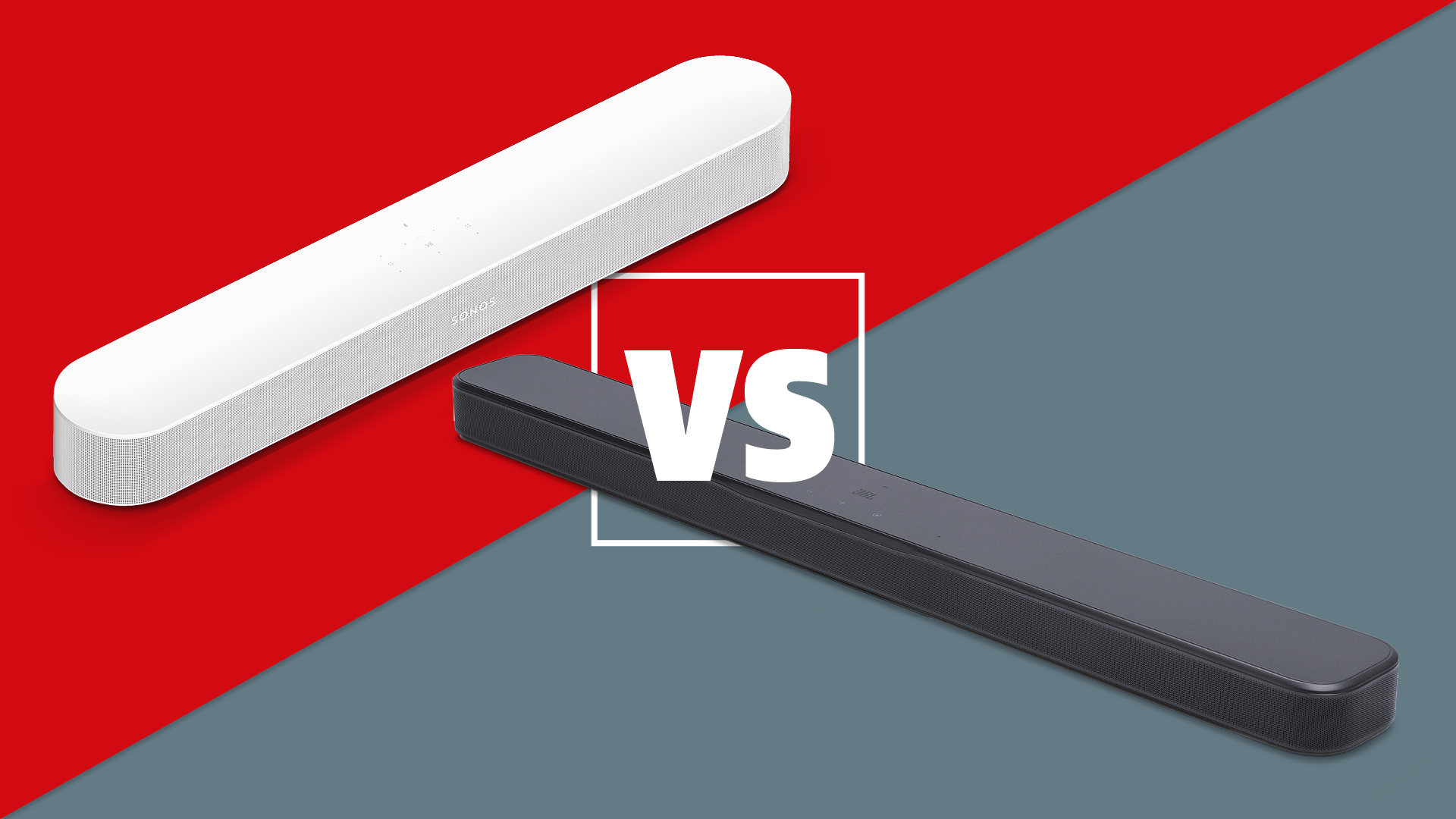Samsung S95D vs Sony A95L: which super-bright OLED TV is best?
Who said OLEDs struggled with brightness?
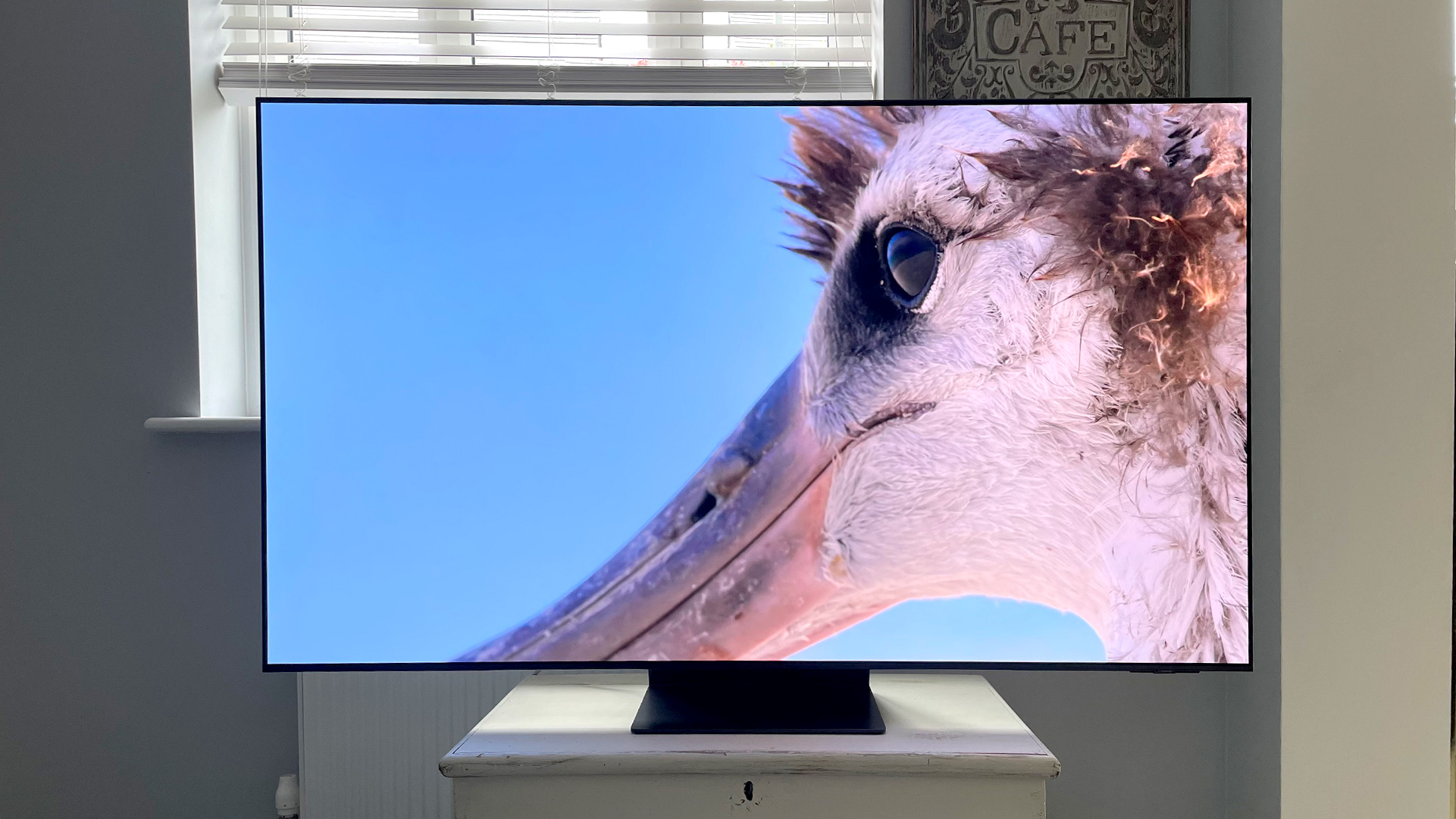
Screen size: 65in (also available in 55in, 77in)
HDR formats: HLG, HDR10, HDR10+
HDMI inputs: x 4 (4 x 48Gbps HDMI 2.1)
Gaming features: 4K/120Hz, VRR, ALLM
Dimensions (hwd, without stand): 83 x 144 x 1cm
Samsung's latest OLED TV feels like the start of a new generation. Its brightness is off the scale, as are the contrast and colours, but the S95D is also more balanced than previous models. Sure, it's pricey, and the sound lacks impact, but add a soundbar and you'll be set.
Pros
- Phenomenal brightness, contrast and colour
- Four HDMI 2.1 sockets and great gaming specs
- Anti-reflection filter works almost uncannily well
Cons
- Filter has minor negative side effects
- Audio lacks power and impact
- Some minor shadow detail loss
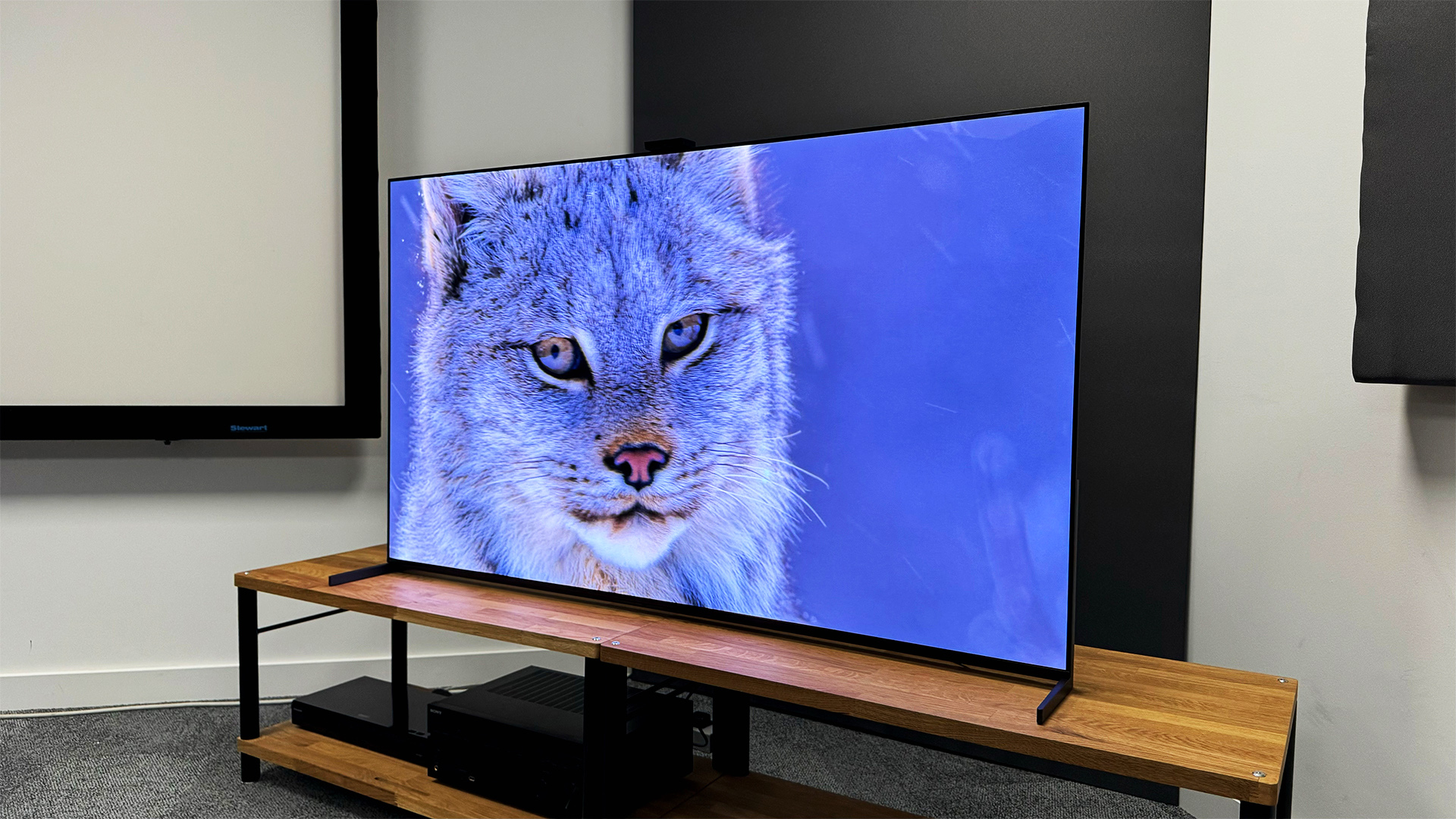
Screen size: 65in (also available in 55in, 77in)
HDR formats: HLG, HDR10, Dolby Vision
HDMI inputs: x 4 (2 x 48Gbps HDMI 2.1)
Gaming features: 4K/120Hz, VRR, ALLM
Dimensions (hwd, without stand): 83 x 144 x 3.4cm
The A95L might undercut the S95D on price, but for how long? It sounds much better too, and while its picture can't quite match the dazzling performance set by Samsung's finest it has the edge for subtlety and balance. Only two HDMI 2.1 ports could be an issue for some gamers.
Pros
- Stunning brightness, contrast and colours
- But even-handed and authentic, too
- Crisp, direct and spacious sound
Cons
- Still only two HDMI 2.1 sockets
- Relatively chunky and heavy
- Very wide stance can be awkward
There's a new breed of OLED TVs around, one that goes brighter and more stunning than those that have come before. Sony's A95L is one such model – it offers a brighter and more efficient performance than its excellent predecessor, the A95K. It duly earned five stars in our review.
But now it faces stiff competition in the form of the newer Samsung S95D. Another five-star stunner, this third-gen QD-OLED model represents a giant leap forward in performance over its predecessor, the S95C.
Wondering which is best? Let's find out.
Samsung S95D vs Sony A95L: price
Both of these TVs carry premium price tags, but there's not much to choose between them. The 65-inch A95L cost £3699 / $3500 / AU$5995 at launch, while the same size S95D is £3599 / $3400 / AU$4999 (the S95D's model number varies in the US and Australia).
The Sony has been on sale longer (since the tail end of last year), and has dropped in price further, so it's currently the more affordable model by quite a large margin. But Samsung TVs usually see bigger discounts than Sony's come big sale events such as Amazon Prime Day and Black Friday, so keep a look out...
** Winner: Sony A95L **
Samsung S95D vs Sony A95L: design

As you would expect when you're paying this sort of money on a TV, both of these sets are pretty eye catching.
The latest hi-fi, home cinema and tech news, reviews, buying advice and deals, direct to your inbox.
For the A95L, Sony has simplified the design. Gone is the A95K's innovative (but heavy) stand that could be positioned in front or behind the TV. In its place are two aluminium feet that sit at the screen's extremes – this might do away with reflections on the screen, but it does give the TV a very wide footprint. Only the 77-inch model can reposition the feet centrally – sadly it's not an option on the smaller models.
All versions can raise up using feet extenders to accommodate a soundbar, however. So that's a plus.
The super-slim bezel is quite noticeable purely because it's black and the screen is slightly grey. That's due to the anti-reflective properties of the second-gen QD-OLED panel, and it's a price worth paying – the screen is visible even in direct sunlight, and you only notice the greyness of the screen when the TV is off and the room lights are on.
The A95L isn't the slimmest TV around, but then it does house a heatsink and actuator-based sound system. Again, it's a tradeoff worth having.
The S95D, however, is quite ridiculously slim – just 1cm deep. If you're wall hanging your TV, this design is going to be seriously tempting. The stand is more practical than the A95L's feet, as it attaches under the middle of the TV, making it much easier to find space for.
Again, the bezel is impressively narrow, which draws your eye into the picture.
The reason the S95D can be so slim is simple: the One Connect box. This external housing contains all of the TV's connections and processing gubbins, and means you only need a single cable to connect to the TV. Very sleek.
** Winner: Samsung S95D **
Samsung S95D vs Sony A95L: features
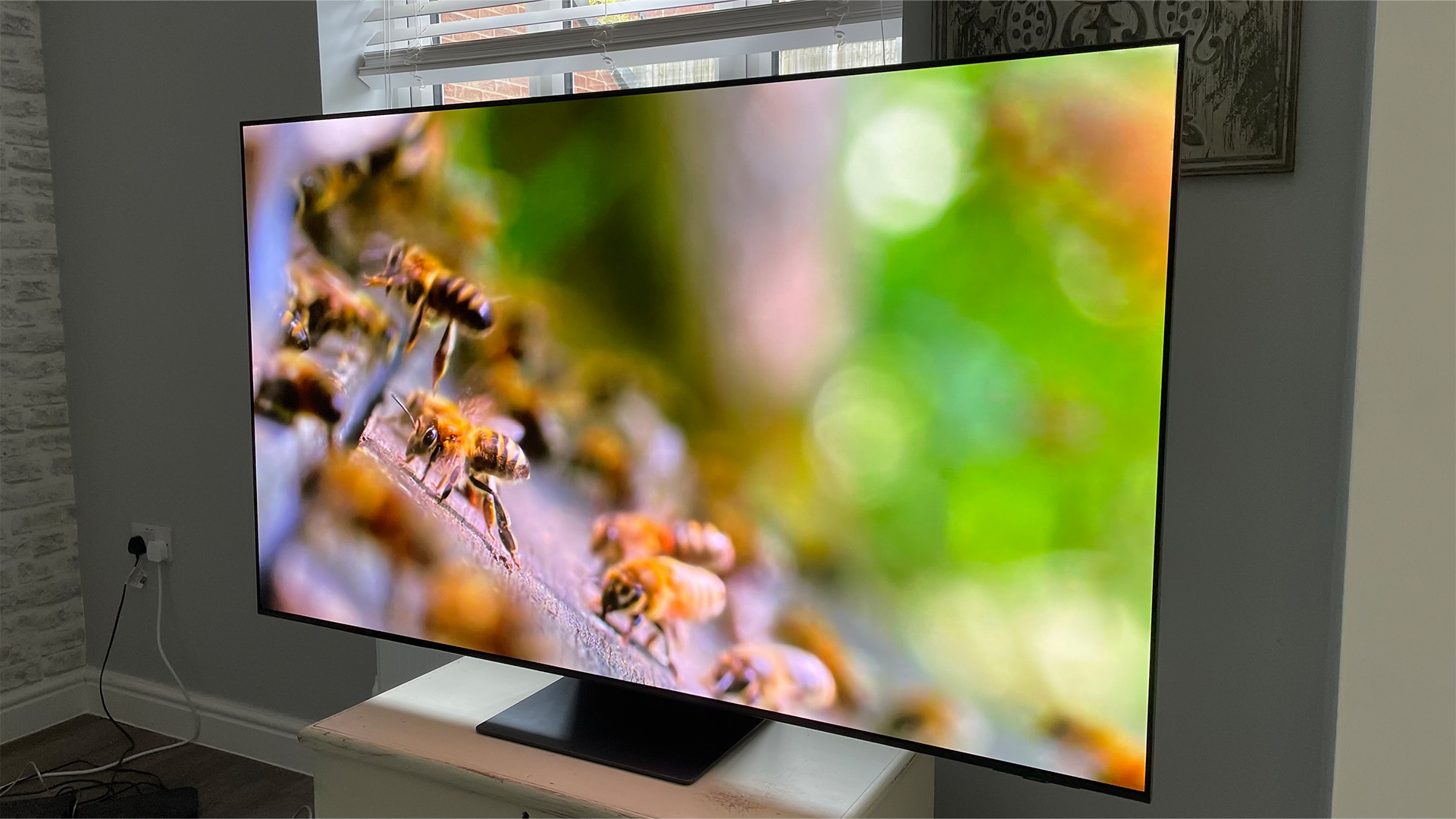
Added brightness is among the main selling points of both TVs, but they offer a lot more besides...
The A95L is powered by Sony's Cognitive Processor XR, which is one of the best TV picture processing brains in the business. This most recent version adds XR Clear Image, which cleans up source material to optimise it for the TV’s 4K resolution.
Gamers are less well served. The A95L only has two HDMI 2.1 sockets, one of which is the eARC port for connecting a soundbar or AV receiver. Which leaves just one port free for a modern games machine.
Thankfully, the two HDMI 2.1 sockets do support 4K/120Hz, VRR and ALLM, and you no longer have to go through regular settings jiggery-pokery to find the correct HDMI setting for your source. And while Sony doesn't have a specific HGiG setting for more accurate HDR tone-mapping in games, you can turn HDR tone-mapping off in the TV's menus to achieve the same result.
In better news for gamers, it's the first Sony TV to support Dolby Vision gaming (up to 4K/120Hz). And there's a dedicated gaming menu for quick access to gaming features.
The A95L is the only Sony model in its latest range to come bundled with the Bravia CAM camera for video calling and some other features. It's a bit of a gimmick, but some may find it useful. And the A95L runs the Google TV operating system, which, unfortunately, is a bit sluggish in this instance. Hopefully an update will fix that.
An update has already added UK catch-up apps such as the BBC iPlayer, the lack of which we complained about at launch.
Samsung's S95D uses the firm's third-gen QD-OLED panel technology, which is one generation on from the Sony A95L. At 20-30 per cent brighter than the S95C, this is the brightest OLED screen ever seen.
Like the A95L, the S95D also features an anti-reflection filter, and mighty effective it is, too.
Its brain is the Neo Quantum 4K AI Gen 2 processor, which has 20 separate neural networks working on every frame of the picture. This means better upscaling (with a more three-dimensional and lifelike image) and more accurate colour mapping (validated by the experts at Pantone). The processor also handles Samsung's Object Tracking Sound+ system to place sound effects around the room. This now works with Dolby Atmos sound mixes, too.
Samsung's Tizen operating system now includes profiles and a smarter recommendations engine. And gamers are well catered for, with four (count 'em!) HDMI 2.1 ports that support 4K/120Hz playback, 144Hz frame rates, an HDR game mode that keeps input lag to just 9.8ms and ALLM switching. A Game Hub collates all your streamed and connected gaming services and devices together on a single screen, and a Game Bar onscreen menu of graphics information and gaming aids.
The only missing gaming feature is a Dolby Vision game mode. But then no Samsung TV has ever supported Dolby Vision, so it's hardly surprising.
** Winner: Samsung S95D**
Samsung S95D vs Sony A95L: picture
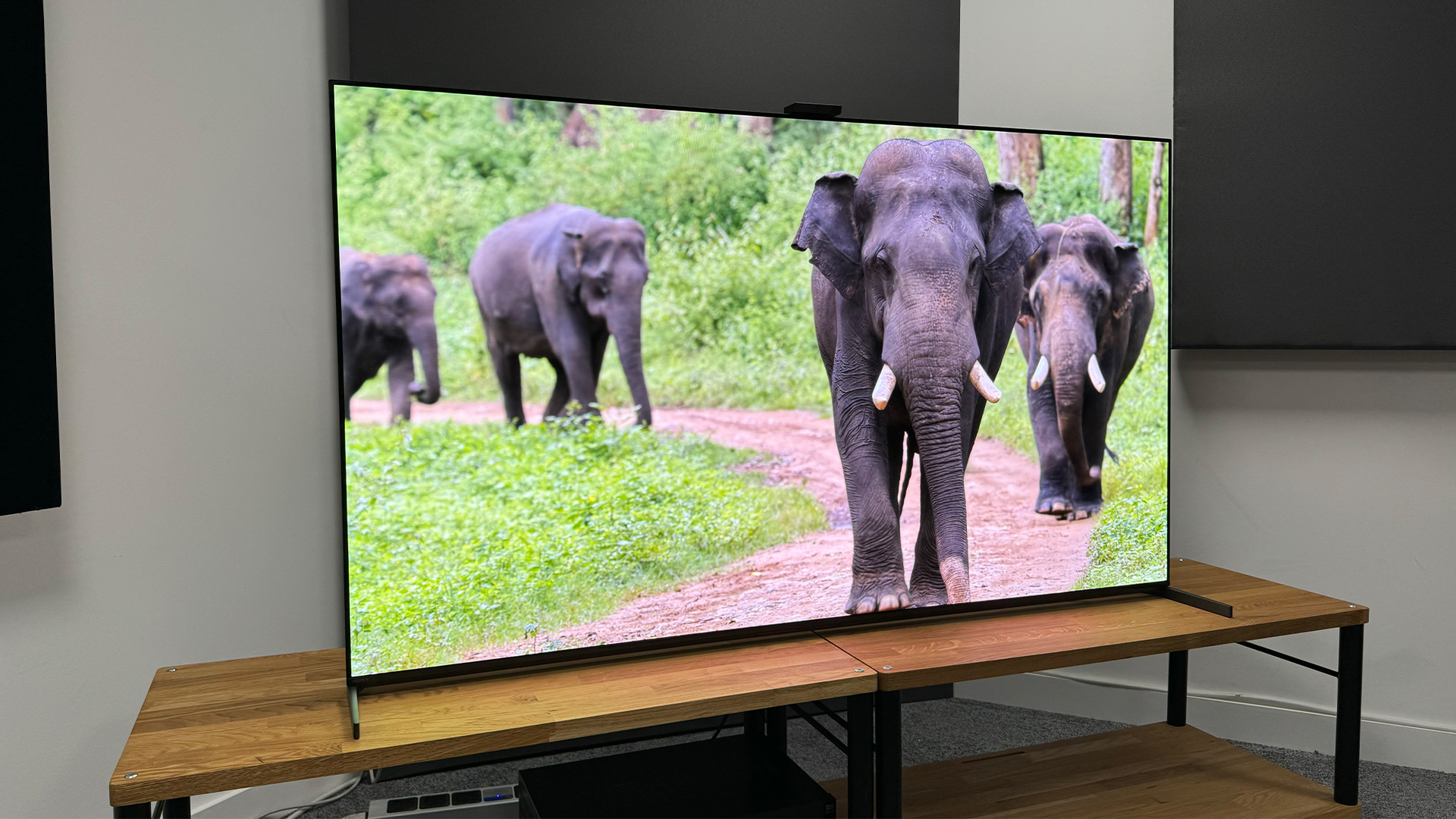
The A95L bowled us over when we reviewed it at the end of 2023. It trounced every TV we pitted it against, including superb sets such as the Sony A80L, LG G3, Samsung S95C and Panasonic MZ2000. Its extra brightness and colour vibrancy are clear from the off, with brighter highlights and added texture detail that most rivals lack.
There's no loss of black depth either, with plenty of shadow detail to enjoy. Skin tones remain accurate even in the darkest parts of the picture, and don't go pale as they do on many TVs.
This extra contrast means better-defined edges and a more solid picture, but this combines with an even greater degree of subtlety. Next to this, the normally impactful A80L looks decidedly dull and flat. And for all its pop and dynamism, the A95L never loses authenticity in the picture.
The S95D is an altogether more intense viewing experience. It's bright. And when we say bright, we mean bright. Blisteringly bright peak white highlights and richly saturated colours rub up against the kind of inky black levels OLED TVs are renowned for. The resulting contrast is beyond that of any TV we've reviewed before.
What's more impressive is how it all hangs together. Previous Samsung TVs have had plenty of pop, but it's all looked a bit unnatural. While not quite as subtle and nuanced as the A95L, the S95D gets closer than any previous Samsung could, and it never veers on the side of cartoonish. There's less clipping of subtle colour and peak light details than with the S95C, resulting in a more consistently detailed picture. And the extra colour skills make it sharper and crisper than the S95C as well.
This extra brightness isn't just for impressing during viewing demos – it comes into its own on sunny days, especially in conjunction with the TV's anti-reflective filter. The upscaling system is expert at differentiating between natural grain and mastering noise, producing beautifully filmic results that look clean without feeling scrubbed of detail.
The brightness does pale next to a high-end LCD TV when showing a bright HDR image across the whole screen. And there are other niggles. The anti-reflection filter can make black levels look a tad raised in a bright room, with faint traces of blooming. Standard mode's underlying brightness level can be a little uneven, and there's a slight loss of subtle shadow detail in dark areas.
Overall, though, the S95D is a stunning performer. As is the A95L. Which is outright 'better' really comes down to whether your preference is outright spectacle (S95D) or the last word in balance and subtlety (A95L).
** Winner: draw **
Samsung S95D vs Sony A95L: sound
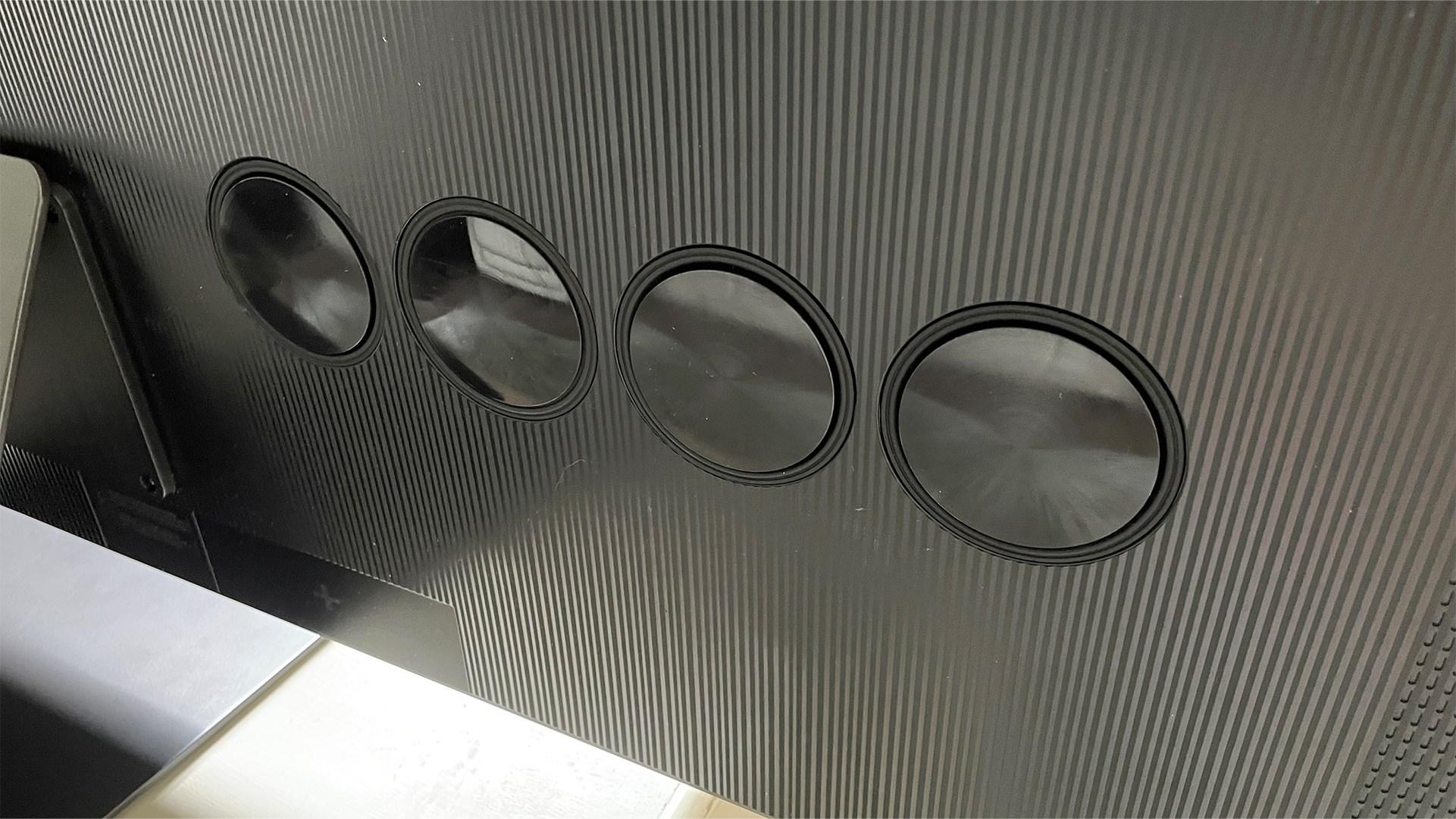
The A95L uses a tweaked version of the 2.2-channel actuator-based sound system of the A95K. Two actuators make sound by vibrating the screen, with two regular woofers on bass duties. This makes sure the sound and picture are in sync.
It also places sounds around the screen, so dialogue comes straight from the actors' mouths. But it also projects well, filling the space around the TV's physical limitations. Dialogue is focused, and there's plenty of detail and dynamic nuance to voices.
While the bass isn't as deep as some rivals, it is well-defined and textured, and doesn't get flustered by super-low frequencies even at high volumes.
The S95D sounds a bit drab by comparison, especially given its super-bright picture. Samsung’s object-tracking sound system successfully creates a soundstage that extends far beyond the edges of the screen. It also places sounds into that space with quite startling accuracy, even managing to portray the path of moving noisy objects as they cross the screen. Details are clean and precise, and dialogue is clear.
But it's let down by a lack of projection. It sounds like something happening in front of you, rather than something immersing you in it. Even the loudest volume lacks impact, while the limited dynamic range and vague bass carry a distinct lack of scale and weight.
** Winner: Sony A95L **
Samsung S95D vs Sony A95L: verdict
Both of these TVs are absolute stunners that fully justify their flagship billing. The Samsung S95D uses its third-generation QD-OLED panel to dazzling effect, producing one of the most spectacular picture performances we have ever seen. It's a cracking choice for gamers, too, thanks to those four HDMI 2.1 sockets, and the design is spectacular.
The Sony A95L is marginally less dazzling in terms of picture quality, but it's still spectacular in its own right and it has the edge in terms of balance, subtlety and fine detail. It also fairly trounces the S95D for audio quality, which should be a strong consideration if you are determined to not buy a dedicated sound system.
Overall, this is a tough one to call, but while the Sony is available for less, it's the one we recommend to most people. If the Samsung becomes the cheaper model – and we suspect that one day it will – it will likely become our preferred pick.
Whichever you choose, you're guaranteed a fantastic viewing experience. Looks like there's plenty of life in OLED TVs yet.
MORE:
Are they among the best TVs you can buy?
Are we hitting peak brightness?
What are nits and lumens and why are they important for TVs?
Joe has been writing about tech for 20 years, first on staff at T3 magazine, then in a freelance capacity for Stuff, The Sunday Times Travel Magazine (now defunct), Men's Health, GQ, The Mirror, Trusted Reviews, TechRadar and many more. His specialities include all things mobile, headphones and speakers that he can't justifying spending money on.

